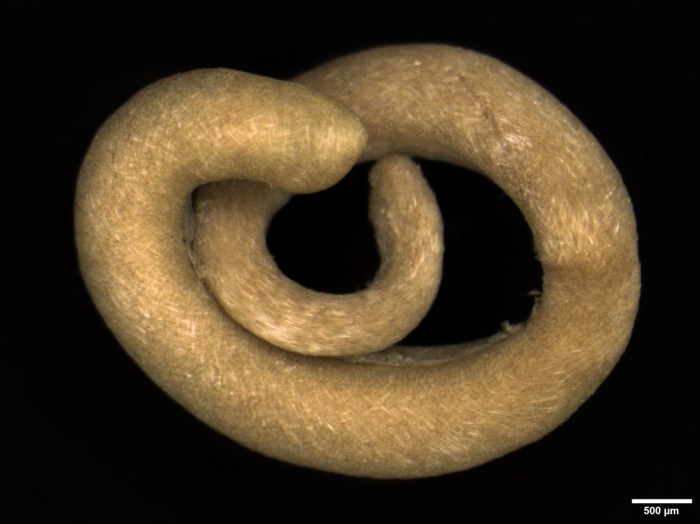Each year, the World Register of Marine Species (WoRMS) releases its annual list of the top-ten marine species described by researchers during the past year to coincide with World Taxonomist Appreciation Day on March 19th! If you were unaware of this celebration of all the work that taxonomists do to document and describe the world’s biodiversity, you can find more here and here.
Dorymenia boucheti Cobo & Kocot 2023 is a newly described species of Solenogastres (Mollusca, Aplacophora) from the South China Sea. Aplacophorans are a strange and fascinating group of worm-like molluscs that differ from most members of the phylum by lacking a shell and instead being covered by scales or spines. Dorymenia boucheti was named to honor Dr. Philippe Bouchet, a prolific malacologist (scientist who studies mollusks) who recently retired after an accomplished career at the Muséum National d’Histoire Naturelle in Paris, France. Dr. Bouchet has led expeditions all over the world aimed at discovering and documenting marine biodiversity, named well over 500 molluscan species, and has contributed to the mentoring of many early-career malacologists, including Dr. Cobo. The full description of the new species was published in the May 2023 issue of Invertebrate Systematics. The paper was also co-authored by Kocot lab Ph.D. student Emily McLaughlin.
Aplacophora is arguably one of the most understudied groups of Mollusca. Just around 450 species have been described to date, but their diversity has been estimated to be tenfold higher. There has always been a fairly small number of taxonomists working on the group and, sadly, between 2014-2015 two experts who collectively described nearly 1/3 of the named species in the group passed away. Fortunately, a new generation of ‘aplacologists’ like Dr. Cobo, who recently took a new position at the Smithsonian Institute National Museum of Natural History, is carrying the torch and continuing to improve understanding of the biodiversity of these fascinating but understudied molluscs and excite other researchers about them.

